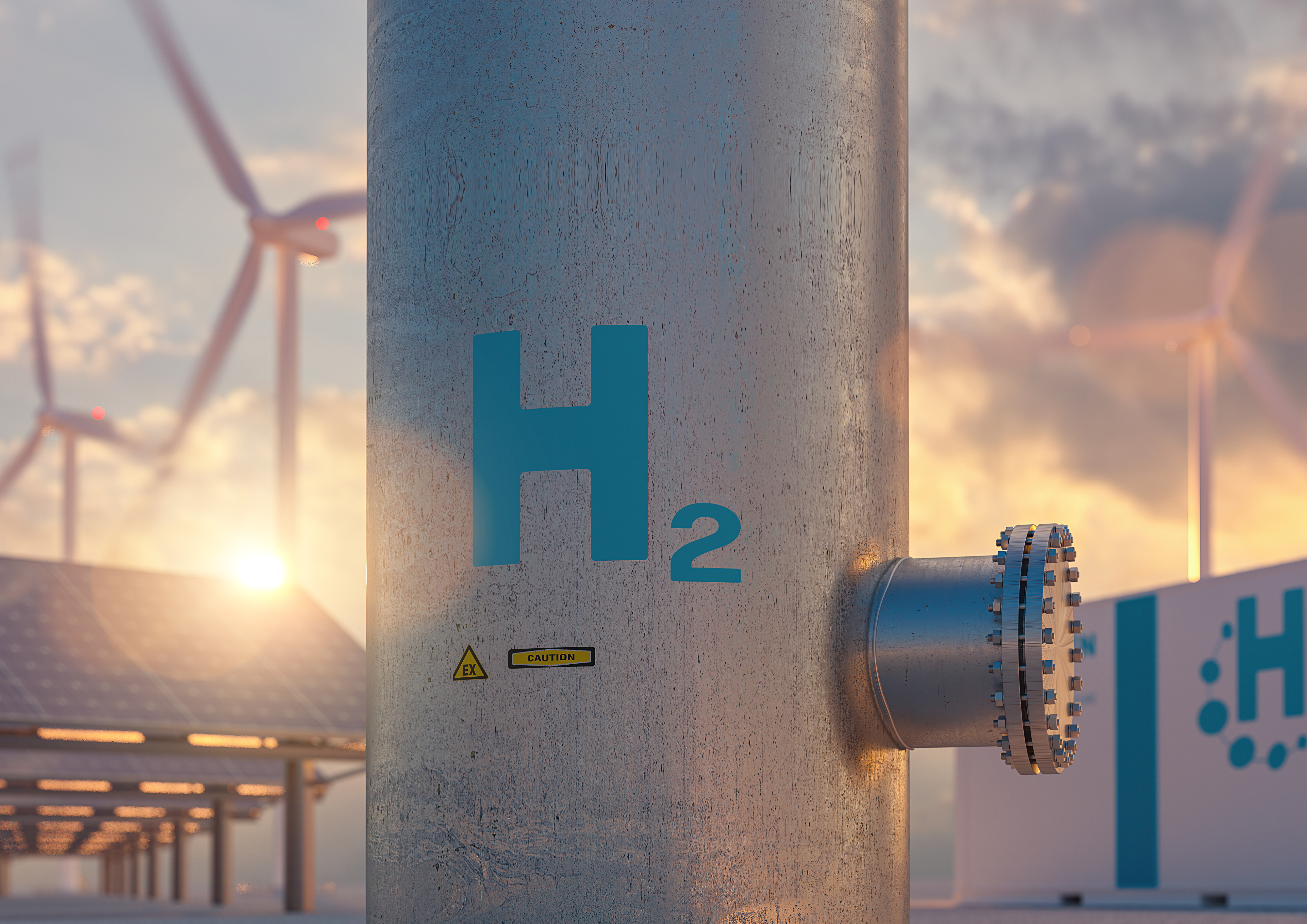Driving the Green Revolution: Innovations in Hydrogen, Environmental Regulations, and Sustainable Energy Partnerships
On this page:
- Introduction
- Legal and regulatory updates
- South Australia pioneering the hydrogen frontier
- Amendments made to the Environment Protection Act 1993
- Delay in commencement of mandatory climate reporting
- Introduction of new mandatory nature reporting framework
- Industry updates
- Santos secures funding for carbon capture and storage project
- Malinauskas Government and GFG Alliance forge partnership for clean energy future
- BHP leads effort for Northern Water Supply Project
- Expertise
- Experts
Introduction
In this energy, resources and environment industry update, we discuss key legal and regulatory updates such as the establishment of the nation’s first legislative framework to facilitate large-scale hydrogen and renewable energy projects, amendments to the Environment Protection Act 1993 (SA) and the proposed framework for mandatory nature-related reporting in Australia.
We also provide an update on key industry initiatives driving the transition towards cleaner energy sources and sustainable practices, such as Santos’ ambitious carbon capture storage project and BHP’s Northern Water Supply Project.
Legal and regulatory updates


South Australia pioneering the hydrogen frontier
In our previous Energy, Resources and Environment Update – November 2023, we reported that the Hydrogen and Renewable Energy Bill 2023 (HRE Bill) had been introduced into the South Australian Parliament. The HRE Bill has now passed both Houses of South Australian Parliament with minor amendments, marking the nation’s first legislative framework designed specifically for hydrogen and renewable energy industries (the Hydrogen and Renewable Energy Act 2023 (SA) (HRE Act)).
The HRE Act seeks to streamline the regulatory process across the entire life cycle of large-scale hydrogen and renewable energy projects by providing a single regulatory instrument, which will replace the current patchwork of legislation governing these projects in South Australia.
Once in effect, the HRE Act will regulate projects that involve:
- ‘generating hydrogen’ which includes undertaking operations to create hydrogen (and any compound of hydrogen necessary for its process, storage, or transport) by processes such as the electrolysis of water (‘green hydrogen’) or the reformation of natural gas (‘grey’ and ‘blue’ hydrogen); or
- ‘renewable energy resources’ which includes any solar, wind, wave, and tidal energy projects.
Key amendments made from the HRE Bill include:
- the introduction of a new ‘renewable energy feasibility permit’ which will authorise its holder to undertake construction, operation, maintenance and decommissioning of infrastructure to assess the feasibility of generating renewable energy from a renewable energy resource;
- the introduction of a new ‘associated infrastructure licence’ which authorises the undertaking of an ‘associated infrastructure activity’ typically associated with the production of hydrogen or renewable energy (such as roads, transmissions and power plants);
- the ability for the Minister to either increase or decrease the size of a licence area on application by a licensee or with the consent of the licensee;
- the expansion of the definition of ‘owner’ of land to include the holder of an aquaculture lease or aquaculture licence under the Aquaculture Act 2001 (SA); and
- specific compensation mechanism for land owners whose rights have been ‘materially diminished in consequence of authorised operations’.
The next step is to establish regulations that provide more details to support the HRE Act’s operation. Once the associated regulations are established, the HRE Act will become operational. This is expected to be quite soon as the consultation period for the proposed draft Hydrogen and Renewable Energy Regulations 2024 closed on 15 April 2024.
Amendments made to the Environment Protection Act 1993
The Environment Protection Act 1993 (SA) (Act) will be amended to include references to climate change. These updates will not impose new obligations on businesses or the public; instead, they will clarify the role of the Act and the EPA's responsibilities in climate change regulation, aiding South Australia's journey towards a net-zero future.
These amendments are designed to:
- clarify the responsibilities of the industry, government and the community;
- equip the EPA board with the necessary expertise in climate change adaptation and mitigation, facilitating effective administration of the Act; and
- facilitate the formulation of a focused Environment Protection Policy centred on climate change, currently in the planning stages.
Anticipated to take effect in the first half of 2024, these amendments signify a proactive step towards addressing climate concerns within environmental legislation. See EPA South Australia for more information about the legislation.
Delay in commencement of mandatory climate reporting
The Task Force on Climate-related Financial Disclosures (TCFD) was disbanded late last year following the Australian Government’s promise to mandate climate reporting in Australia by introducing the Treasury Laws Amendment (Financial Market Infrastructure and Other Measures) Bill (Bill) into Parliament.
Currently, the Bill has not passed through both Houses of Parliament. This has led to a delay in the anticipated start date for Group 1 entities. Instead of commencing on 1 July 2024, the new anticipated start date is 1 January 2025 with the possibility of further delays.
We will provide a more detailed update on the status of the Bill and the mandatory climate reporting regime in the upcoming weeks.
Introduction of new mandatory nature reporting framework
Launched in 2021, the Nature-related Financial Disclosures (TNFD) is a global, market-led, science-based, and government-supported initiative with a goal of developing a risk management and disclosure framework for organisations to report and act on nature-related issues.
On 18 September 2023, the TNFD published its final framework for market adoption. The framework aims at making nature-related reporting mandatory in Australia, supporting efforts to restore and conserve land and waters by 2030. Building on the structure of the existing disclosure framework developed by the TCFD, the TNFD framework is structured around four key pillars.
- Describe the board’s oversight of nature-related dependencies, impacts, risks, and opportunities.
- Describe management’s role in assessing and managing nature-related dependencies, impacts, risks, and opportunities.
- Describe the organisation’s human rights policies and engagement activities, and oversight by the board and management, with respect to Indigenous Peoples, Local Communities, affected and other stakeholders, in the organisation’s assessment of, and response to, nature-related dependencies, impacts, risks and opportunities.
- Describe the nature-related dependencies, impacts, risks and opportunities the organisation has identified over the short, medium and long term.
- Describe the effect nature-related dependencies, impacts, risks and opportunities have had on the organisation’s business model, value chain, strategy and financial planning, as well as any transition plans or analysis in place.
- Describe the resilience of the organisation’s strategy to nature-related risks and opportunities, taking into consideration different scenarios.
- Disclose the locations of assets and/or activities in the organisation’s direct operations and, where possible, upstream and downstream value chain(s) that meet the criteria for priority locations.
- Describe the organisation’s processes for identifying, assessing and prioritising nature-related dependencies, impacts, risks and opportunities in its direct operations.
- Describe the organisation’s processes for identifying, assessing and prioritising nature-related dependencies, impacts, risks and opportunities in its upstream and downstream value chain(s).
- Describe the organisation’s processes for monitoring nature-related dependencies, impacts, risks and opportunities.
- Describe how processes for identifying, assessing, prioritising, and monitoring nature-related risks are integrated into and inform the organisation’s overall risk management processes.
- Disclose the metrics used by the organisation to assess and manage material nature-related risks and opportunities in line with its strategy and risk management process.
- Disclose the metrics used by the organisation to assess and manage dependencies and impacts on nature.
- Describe the targets and goals used by the organisation to manage nature-related dependencies, impacts, risks and opportunities and its performance against these.
Stakeholders are advised to familiarise themselves with the framework, pilot it in their organisations, conduct gap analyses, review existing disclosures, and build internal capacities. See Recommendations of the Taskforce on Nature-related Financial Disclosures for more information.
Industry updates


Santos secures funding for carbon capture and storage project
Oil and gas giant Santos has secured a USD$150 million (AUD$228 million) loan to advance its carbon capture and storage project. The initiative aims to capture carbon dioxide emissions from gas production and store them underground. With a capacity to store up to 1.7 million tonnes of CO2 annually, the project could reduce Australia's electricity sector emissions by 28%. This move underscores Santos' commitment to sustainable energy practices and sets a precedent for the industry's transition towards cleaner technologies. See Santos Secures Moomba carbon capture and storage finance to drive decarbonisation for more information.
Malinauskas Government and GFG Alliance forge partnership for clean energy future
The Malinauskas Government and GFG Alliance, owners of the Whyalla steelworks, have signed an agreement to explore commercial supply from the upcoming Port Bonython power station near Whyalla, set to commence operations in 2026. With a commitment to invest $593 million in a hydrogen plan, the government aims to spearhead the transition to clean energy, facilitate international exports, and invigorate the state economy. The steelworks are already making strides towards phasing out coal-based steelmaking and slashing carbon dioxide emissions, signalling a significant shift towards sustainability in the industry. See Hydrogen deal talks for Whyalla steelworks for more information.
BHP leads effort for Northern Water Supply Project
BHP, along with the South Australian Government and other industry players, has announced the progression of the Northern Water Supply Project (NWSP) to the next phase of study. The NSWP aims to address water supply challenges in South Australia's Upper Spencer Gulf and Far North regions through the development of a multi-user desalination pipeline.
The proposed project involves building a 260 megalitre per day desalination plant on Eyre Peninsula and constructing a 600-kilometer pipeline to distribute desalinated water to the Far North. Anna Wiley, BHP’s Asset President Copper South Australia, highlighted the strategic importance of the NWSP, emphasising its potential to benefit various sectors and businesses.
The initiative aligns with the increasing global demand for copper, presenting significant opportunities for South Australia. BHP aims to leverage the project to support its copper operations in the region and facilitate sustainable growth in line with its broader ambitions. See Studies progress for new South Australian water project for more details.
This article provides general commentary only. It is not legal advice. Before acting on the basis of any material contained in this article, seek professional advice.
Co-author
Name: Stephanie Maurangi
Position: Lawyer
Practice: Transactions
Expertise
Unique business activities require specific legal skills and experience; this includes provision of practical advice and commercial solutions. Both are at the core of our offering.
From corporate advisory work to transactional advice, from dealing with ASX requirements to managing disputes, we’re renowned for our industry expertise and helping our energy and resource clients achieve their goals.
Find out how our expert energy and resources law team can assist your business here.
Experts
Related Insights
Energy, resources and environment update - November 2023

Energy, resources and environment update - July 2023

Energy, resources and environment update - May 2023

Energy, resources and environment update - February 2023






